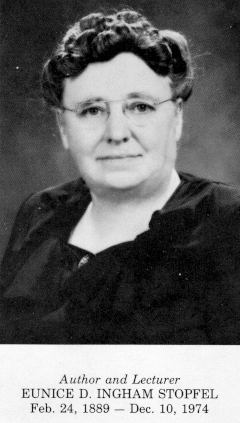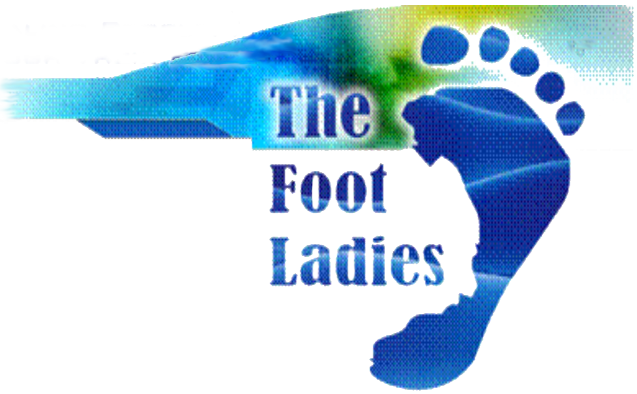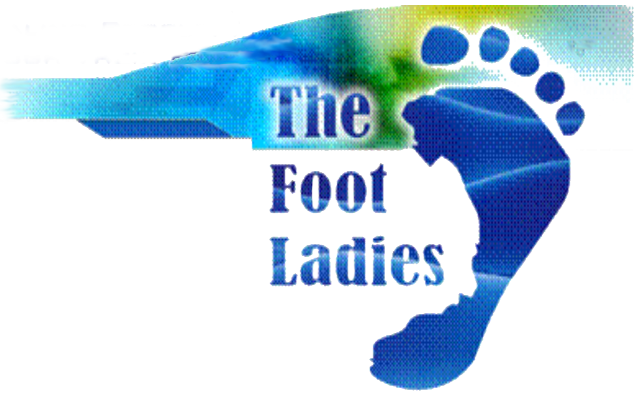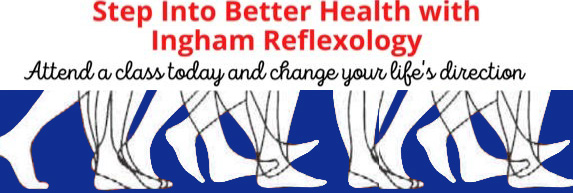Eunice D. Ingham - Mother of Reflexology
Eunice D. Ingham
Mother of Reflexology
Mother of Reflexology
Eunice D. Ingham
Mother of Reflexology
Mother of Reflexology

Eunice Dakota Ingham was born in South Dakota in 1889 and went on to work as a physiotherapist for Dr. Joe Shelby Riley. Dr Riley was very interested in work that a colleague, Dr Fitzgerald had published on the subject of zone therapy. Eunice Ingham took time to research and develop the zone therapy findings and developed her foot theory in the early 1930′s.
She had the opportunity to treat hundreds of patients where each reflex point of contact had been carefully and thoughtfully checked and rechecked until with all confidence she was able to determine that the reflexes on the feet were an exact image of the organs of the body. In 1938 Dr. Riley encouraged her to write her first book entitled "Stories The Feet Can Tell" where she documented her cases and carefully mapped out the reflexes on the feet as we know them today.
Eunice became very well known and travelled the world attending health seminars where she spoke with medical practitioners about her therapy. In latter years she was joined by her nephew, Dwight C. Byers.
Her book was later translated into seven foreign languages which spread the benefits of Reflexology way beyond the borders of the States. The confusion between Reflexology and Zone Therapy started at this point because the foreign publisher changed the name of Eunice’s book, " The Stories The Feet Can Tell" to "Zone Therapy" and in some parts of the world it is still thought of as Zone
She had the opportunity to treat hundreds of patients where each reflex point of contact had been carefully and thoughtfully checked and rechecked until with all confidence she was able to determine that the reflexes on the feet were an exact image of the organs of the body. In 1938 Dr. Riley encouraged her to write her first book entitled "Stories The Feet Can Tell" where she documented her cases and carefully mapped out the reflexes on the feet as we know them today.
Eunice became very well known and travelled the world attending health seminars where she spoke with medical practitioners about her therapy. In latter years she was joined by her nephew, Dwight C. Byers.
Her book was later translated into seven foreign languages which spread the benefits of Reflexology way beyond the borders of the States. The confusion between Reflexology and Zone Therapy started at this point because the foreign publisher changed the name of Eunice’s book, " The Stories The Feet Can Tell" to "Zone Therapy" and in some parts of the world it is still thought of as Zone
Therapy. However, there is a distinct difference between the two therapies. Zone Therapy relies solely on the zones to determine the area to be worked, whereas Reflexology takes the zones as well as the anatomical model to determine the area or areas to be work
Eunice’s life-long goal was to "help mankind as much as we are able, whenever possible and wherever we might be."
Eventually, Dwight took over the teaching seminars and established the International Institute of Reflexology, to protect Eunice’s original writings, worldwide. His daugher, Gail and grandson, James continue Eunice and Dwight's work at the institute in St. Petersburg, FL.
On December 10, 1974, Eunice passed over at the age of 85 years. She had dedicated her life to helping others and was totally committed to the benefits of Reflexology.
To read more about this amazing woman read the book: Eunice D. Ingham - A Biography of Reflexology's Pioneer
Eunice’s life-long goal was to "help mankind as much as we are able, whenever possible and wherever we might be."
Eventually, Dwight took over the teaching seminars and established the International Institute of Reflexology, to protect Eunice’s original writings, worldwide. His daugher, Gail and grandson, James continue Eunice and Dwight's work at the institute in St. Petersburg, FL.
On December 10, 1974, Eunice passed over at the age of 85 years. She had dedicated her life to helping others and was totally committed to the benefits of Reflexology.
To read more about this amazing woman read the book: Eunice D. Ingham - A Biography of Reflexology's Pioneer
Reflexology is not a substitute for medical intervention, and it is important that for any serious medical conditions, diagnosis is made by a medical professional. As reflexologists, we cannot claim to cure, prescribe or diagnose, but many believe it is a great therapy to re-balance, relax and restore.

Eunice Dakota Ingham was born in South Dakota in 1889 and went on to work as a physiotherapist for Dr. Joe Shelby Riley. Dr Riley was very interested in work that a colleague, Dr Fitzgerald had published on the subject of zone therapy. Eunice Ingham took time to research and develop the zone therapy findings and developed her foot theory in the early 1930′s.
She had the opportunity to treat hundreds of patients where each reflex point of contact had been carefully and thoughtfully checked and rechecked until with all confidence she was able to determine that the reflexes on the feet were an exact image of the organs of the body. In 1938 Dr. Riley encouraged her to write her first book entitled "Stories The Feet Can Tell" where she documented her cases and carefully mapped out the reflexes on the feet as we know them today.
She had the opportunity to treat hundreds of patients where each reflex point of contact had been carefully and thoughtfully checked and rechecked until with all confidence she was able to determine that the reflexes on the feet were an exact image of the organs of the body. In 1938 Dr. Riley encouraged her to write her first book entitled "Stories The Feet Can Tell" where she documented her cases and carefully mapped out the reflexes on the feet as we know them today.
Eunice became very well known and travelled the world attending health seminars where she spoke with medical practitioners about her therapy. In latter years she was joined by her nephew, Dwight C. Byers.
Her book was later translated into seven foreign languages which spread the benefits of Reflexology way beyond the borders of the States. The confusion between Reflexology and Zone Therapy started at this point because the foreign publisher changed the name of Eunice’s book, " The Stories The Feet Can Tell" to "Zone Therapy" and in some parts of the world it is still thought of as Zone Therapy. However, there is a distinct difference between the two therapies. Zone Therapy relies solely on the zones to determine the area to be worked, whereas Reflexology takes the zones as well as the anatomical model to determine the area or areas to be work
Eunice’s life-long goal was to "help mankind as much as we are able, whenever possible and wherever we might be."
Eventually, Dwight took over the teaching seminars and established the International Institute of Reflexology, to protect Eunice’s original writings, worldwide. His daugher, Gail and grandson, James continue Eunice and Dwight's work at the institute in St. Petersburg, FL.
On December 10, 1974, Eunice passed over at the age of 85 years. She had dedicated her life to helping others and was totally committed to the benefits of Reflexology.
To read more about this amazing woman read the book: Eunice D. Ingham - A Biography of Reflexology's Pioneer
Her book was later translated into seven foreign languages which spread the benefits of Reflexology way beyond the borders of the States. The confusion between Reflexology and Zone Therapy started at this point because the foreign publisher changed the name of Eunice’s book, " The Stories The Feet Can Tell" to "Zone Therapy" and in some parts of the world it is still thought of as Zone Therapy. However, there is a distinct difference between the two therapies. Zone Therapy relies solely on the zones to determine the area to be worked, whereas Reflexology takes the zones as well as the anatomical model to determine the area or areas to be work
Eunice’s life-long goal was to "help mankind as much as we are able, whenever possible and wherever we might be."
Eventually, Dwight took over the teaching seminars and established the International Institute of Reflexology, to protect Eunice’s original writings, worldwide. His daugher, Gail and grandson, James continue Eunice and Dwight's work at the institute in St. Petersburg, FL.
On December 10, 1974, Eunice passed over at the age of 85 years. She had dedicated her life to helping others and was totally committed to the benefits of Reflexology.
To read more about this amazing woman read the book: Eunice D. Ingham - A Biography of Reflexology's Pioneer
Reflexology is not a substitute for medical intervention, and it is important that for any serious medical conditions, diagnosis is made by a medical professional. As reflexologists, we cannot claim to cure, prescribe or diagnose, but many believe it is a great therapy to re-balance, relax and restore.

Eunice Dakota Ingham was born in South Dakota in 1889 and went on to work as a physiotherapist for Dr. Joe Shelby Riley. Dr Riley was very interested in work that a colleague, Dr Fitzgerald had published on the subject of zone therapy. Eunice Ingham took time to research and develop the zone therapy findings and developed her foot theory in the early 1930′s.
She had the opportunity to treat hundreds of patients where each reflex point of contact had been carefully and thoughtfully checked and rechecked until with all confidence she was able to determine that the reflexes on the feet were an exact image of the organs of the body. In 1938 Dr. Riley encouraged her to write her first book entitled "Stories The Feet Can Tell" where she documented her cases and carefully mapped out the reflexes on the feet as we know them today.
Eunice became very well known and travelled the world attending health seminars where she spoke with medical practitioners about her therapy. In latter years she was joined by her nephew, Dwight C. Byers.
Her book was later translated into seven foreign languages which spread the benefits of Reflexology way beyond the borders of the States. The confusion between Reflexology and Zone Therapy started at this point because the foreign publisher changed the name of Eunice’s book, " The Stories The Feet Can Tell" to "Zone Therapy" and in some parts of the world it is still thought of as Zone Therapy. However, there is a distinct difference between the two therapies. Zone Therapy relies solely on the zones to determine the area to be worked, whereas Reflexology takes the zones as well as the anatomical model to determine the area or areas to be work
Eunice’s life-long goal was to "help mankind as much as we are able, whenever possible and wherever we might be."
Eventually, Dwight took over the teaching seminars and established the International Institute of Reflexology, to protect Eunice’s original writings, worldwide. His daugher, Gail and grandson, James continue Eunice and Dwight's work at the institute in St. Petersburg, FL.
On December 10, 1974, Eunice passed over at the age of 85 years. She had dedicated her life to helping others and was totally committed to the benefits of Reflexology.
To read more about this amazing woman read the book: Eunice D. Ingham - A Biography of Reflexology's Pioneer
She had the opportunity to treat hundreds of patients where each reflex point of contact had been carefully and thoughtfully checked and rechecked until with all confidence she was able to determine that the reflexes on the feet were an exact image of the organs of the body. In 1938 Dr. Riley encouraged her to write her first book entitled "Stories The Feet Can Tell" where she documented her cases and carefully mapped out the reflexes on the feet as we know them today.
Eunice became very well known and travelled the world attending health seminars where she spoke with medical practitioners about her therapy. In latter years she was joined by her nephew, Dwight C. Byers.
Her book was later translated into seven foreign languages which spread the benefits of Reflexology way beyond the borders of the States. The confusion between Reflexology and Zone Therapy started at this point because the foreign publisher changed the name of Eunice’s book, " The Stories The Feet Can Tell" to "Zone Therapy" and in some parts of the world it is still thought of as Zone Therapy. However, there is a distinct difference between the two therapies. Zone Therapy relies solely on the zones to determine the area to be worked, whereas Reflexology takes the zones as well as the anatomical model to determine the area or areas to be work
Eunice’s life-long goal was to "help mankind as much as we are able, whenever possible and wherever we might be."
Eventually, Dwight took over the teaching seminars and established the International Institute of Reflexology, to protect Eunice’s original writings, worldwide. His daugher, Gail and grandson, James continue Eunice and Dwight's work at the institute in St. Petersburg, FL.
On December 10, 1974, Eunice passed over at the age of 85 years. She had dedicated her life to helping others and was totally committed to the benefits of Reflexology.
To read more about this amazing woman read the book: Eunice D. Ingham - A Biography of Reflexology's Pioneer
Reflexology is not a substitute for medical intervention, and it is important that for any serious medical conditions, diagnosis is made by a medical professional. As reflexologists, we cannot claim to cure, prescribe or diagnose, but many believe it is a great therapy to re-balance, relax and restore.

Since they first learned about Reflexology in the early 60's, mother-daughter team Muff and Bobbi Warren studied, practiced and taught Foot and Hand Reflexology worldwide.
The FootLadies,
Copyright 2022
All Rights Reserved.
San Diego, La Mesa, CA
619-723-5276
Bobbi@TheFootLadies.com



